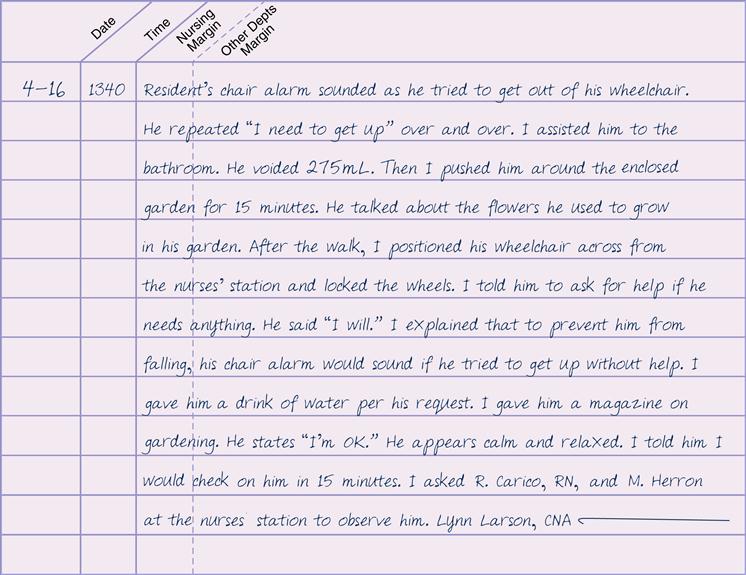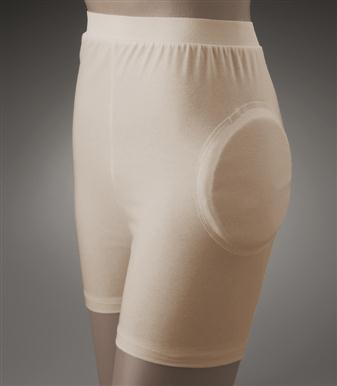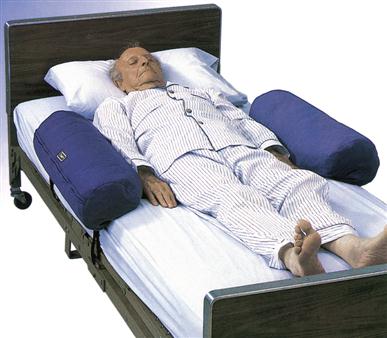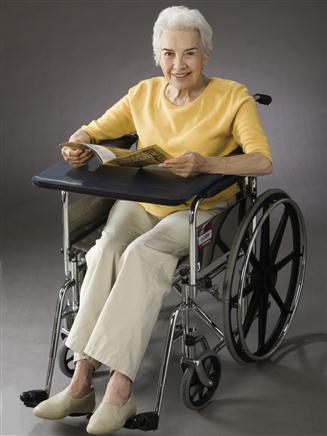Restraint alternatives and safe restraint use
Objectives
• Define the key terms and key abbreviations listed in this chapter.
• Describe the purpose of restraints.
• Identify the complications from restraint use.
• Identify restraint alternatives.
• Explain the legal aspects of restraint use.
• Explain how to use restraints safely.
• Perform the procedure described in this chapter.
Key terms
chemical restraint Any drug that is used for discipline or convenience and not required to treat medical symptoms
freedom of movement Any change in place or position of the body or any part of the body that the person is physically able to control
medical symptom An indication or characteristic of a physical or psychological condition
KEY ABBREVIATIONS
| CMS | Centers for Medicare & Medicaid Services |
| FDA | Food and Drug Administration |
| OBRA | Omnibus Budget Reconciliation Act of 1987 |
| TJC | The Joint Commission |
Chapters 12 and 13 have many safety measures. However, some persons need extra protection. They may present dangers to themselves or others (including staff). For example:
• Mrs. Perez forgets to call for help when getting up and with walking. Falling is a risk.
• Mrs. Wilson tries to pull out her feeding tube. The tube is part of her treatment.
• Ms. Walsh scratches and picks at a wound. This can damage her skin or the wound.
• Mr. Winters tries to hit, pinch, and bite the staff. They are at risk for harm.
![]() The Centers for Medicare & Medicaid Services (CMS) have rules for using restraints. Like the Omnibus Budget Reconciliation Act of 1987 (OBRA), CMS rules protect the person’s rights and safety. This includes the right to be free from restraint or seclusion. Restraints may only be used to treat a medical symptom or for the immediate physical safety of the person or others. Restraints may only be used when less restrictive measures fail to protect the person or others. They must be discontinued at the earliest possible time.
The Centers for Medicare & Medicaid Services (CMS) have rules for using restraints. Like the Omnibus Budget Reconciliation Act of 1987 (OBRA), CMS rules protect the person’s rights and safety. This includes the right to be free from restraint or seclusion. Restraints may only be used to treat a medical symptom or for the immediate physical safety of the person or others. Restraints may only be used when less restrictive measures fail to protect the person or others. They must be discontinued at the earliest possible time.
To meet the person’s safety needs, a resident care conference is held. The health team reviews and updates the person’s care plan. Every attempt is made to protect the person without using restraints. Sometimes they are needed. Restraints are used only as a last resort to protect persons from harming themselves or others.
History of restraint use
Restraints were once thought to prevent falls. Research shows that restraints cause falls. Falls occur when persons try to get free of the restraints. Injuries are more serious from falls in restrained persons than in those not restrained.
Restraints also were used to prevent wandering or interfering with treatment. They were often used for persons who showed confusion, poor judgment, or behavior problems. Older persons were restrained more often than younger persons were. Restraints were viewed as necessary devices to protect a person. However, they can cause serious harm (Box 14-1). They can even cause death.
Besides the CMS, the Food and Drug Administration (FDA), state agencies, and The Joint Commission (TJC—an accrediting agency) have guidelines for the use of restraints. They do not forbid the use of restraints. However, they require considering or trying all other appropriate alternatives first.
Every center has policies and procedures about restraints. They include identifying persons at risk for harm, harmful behaviors, restraint alternatives, and proper restraint use. Staff training is required.
Restraint alternatives
Often there are causes and reasons for harmful behaviors. Knowing and treating the cause can prevent restraint use. The nurse tries to find out what the behavior means. This is very important for persons who have speech or cognitive problems. The focus is on these questions:
• Is the person in pain, ill, or injured?
• Is the person short of breath? Are cells getting enough oxygen (Chapter 28)?
• Is the person afraid in a new setting?
• Does the person need to use the bathroom?
• Is a dressing tight or causing other discomfort (Chapter 35)?
• Is clothing tight or causing other discomfort?
• Is the person’s position uncomfortable?
• Are body fluids, secretions, or excretions causing skin irritation?
• Is the person too hot or too cold?
• Is the person hungry or thirsty?
• What are the person’s life-long habits at this time of day?
• Does the person have problems communicating?
• Is the person seeing, hearing, or feeling things that are not real (Chapter 43)?
• Is the person confused or disoriented (Chapter 44)?
Restraint alternatives for the person are identified (Box 14-2). They become part of the care plan. Care plan changes are made as needed. Restraint alternatives may not protect the person. The doctor may need to order restraints. See Figure 14-3.

Safe restraint use
Restraints can cause serious injury and even death. ![]() CMS, OBRA, FDA, and TJC guidelines are followed. So are state laws. They are part of your center’s policies and procedures for restraint use.
CMS, OBRA, FDA, and TJC guidelines are followed. So are state laws. They are part of your center’s policies and procedures for restraint use.
![]() Restraints are not used to discipline a person. They are not used for staff convenience. Discipline is any action that punishes or penalizes a person. Convenience is any action that:
Restraints are not used to discipline a person. They are not used for staff convenience. Discipline is any action that punishes or penalizes a person. Convenience is any action that:
• Controls or manages the person’s behavior
• Requires less effort by the center
• Is not in the person’s best interests
Restraints are used only when necessary to treat a person’s medical symptoms. The CMS defines a medical symptom as an indication or characteristic of a physical or psychological condition. Symptoms may relate to physical, emotional, or behavioral problems. Sometimes restraints are needed to protect the person or others. That is, a person may have violent or aggressive behaviors that are harmful to self or others.
Physical and chemical restraints
![]() According to the CMS, physical restraints include these points:
According to the CMS, physical restraints include these points:
• May be any manual method, physical or mechanical device, material, or equipment
• Is attached to or next to the person’s body
• Cannot be easily removed by the person
• Restricts freedom of movement or normal access to one’s body
Physical restraints are applied to the chest, waist, elbows, wrists, hands, or ankles. They confine the person to a bed or chair. Or they prevent movement of a body part. Some furniture or barriers also prevent freedom of movement:
• A device used with a chair that the person cannot remove easily. The device prevents the person from rising. Trays, tables, bars, and belts are examples (Fig. 14-4).
• Any chair that prevents the person from rising.
• Any bed or chair placed so close to the wall that the person cannot get out of the bed or chair.
• Bed rails (Chapter 13) that prevent the person from getting out of bed. For example, four half-length bed rails are raised. They are restraints if the person cannot lower them.
Drugs or drug dosages are chemical restraints if they:
Drugs cannot be used for discipline or staff convenience. They cannot be used if not required for the person’s treatment. They cannot be used if they affect physical or mental function.
Sometimes drugs can help persons who are confused or disoriented. They may be anxious, agitated, or aggressive. The doctor may order drugs to control these behaviors. The drugs should not make the person sleepy and unable to function at his or her highest level.
Complications of restraint use
Box 14-1 lists the many complications from restraints. Injuries occur as the person tries to get free of the restraint. Injuries also occur from using the wrong restraint, applying it wrong, or keeping it on too long. Cuts, bruises, and fractures are common. The most serious risk is death from strangulation.
There are also mental effects. Restraints affect dignity and self-esteem. See Box 14-1.
Restraints are medical devices. The Safe Medical Device Act applies if a restraint causes illness, injury, or death. ![]() Also, CMS requires the reporting of any death that occurs:
Also, CMS requires the reporting of any death that occurs:
Legal aspects
Laws applying to restraint use must be followed. Remember the following:
• Restraints are used only after other measures fail to protect the person (see Box 14-2). Some people can harm themselves or others. The care plan must include measures to protect the person and prevent harm to others. Many fall prevention measures are restraint alternatives (Chapter 13).
• Unnecessary restraint is false imprisonment (Chapter 4). You must clearly understand the reason for the restraint and its risk. If not, politely ask about its use. If you apply an unneeded restraint, you could face false imprisonment charges.
See Focus on Communication: Legal Aspects.






